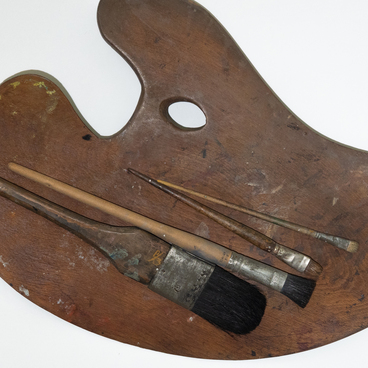The pectoral cross “In memory of the war of 1853–1856” was awarded to the Orthodox Russian clergy, from metropolitans to priests. It was established on August 26, 1856, by Emperor Alexander II along with the medal of the same name.
The military and naval clergy in the Russian Empire were a separate class. The tradition of appointing priests to the regiments appeared as early as 1645 with the beginning of the reign of Alexei Mikhailovich Romanov. Under Peter I, the number of military priests increased, and in 1800, a royal decree finally separated the military clergy from the diocesan one. As a result, a department of military clergy was created under the army. It was ruled by the chief priest of the army and navy, who, for greater authority, was appointed a member of the Holy Synod. The higher military clergy were assisted by the corps and field chief priests.
In 1853, on the eve of the Crimean War, there were already 878 people in the department of the military and naval clergy: 10 archpriests, 541 priests, 63 deacons, and 264 psalmists. By the end of 1855, their number increased by another 100 people. The head of the department at that time was the chief priest of the army and navy Vasily Kutnevich.
During the Crimean War, in addition to traditional divine services, regimental priests and naval hieromonks were engaged in the patriotic education of the lower ranks. They also consoled the wounded, buried the dead, and often stood up with a cross in their hand in front of the regiment to inspire the soldiers and lead them into the attack.
For their stoutness and dedication, many priests — both combatants and workers of labor fronts — were awarded crosses, one of which is kept in the museum’s collection. After their death, the cross was inherited by descendants. They could not wear it, but they had to keep it in memory of the military events.
The emperor approved the sketch of the cross on June 21, 1856. The four curly ends flared slightly towards the edges. In the center of the obverse, there were the combined monograms of the emperors Nicholas I and Alexander II under the imperial crown. Above them was a shining “eye of providence” — an eye enclosed in a triangle. It symbolized the God who knows about all human deeds. At the bottom, the dates “1853-1854-1855-1856” were minted in a semicircle. The reverse side of the cross had an inscription from the Old Testament Psalter which meant “O my God, I trust in thee: let me not be ashamed.” It was surrounded by shining rays.
The military and naval clergy in the Russian Empire were a separate class. The tradition of appointing priests to the regiments appeared as early as 1645 with the beginning of the reign of Alexei Mikhailovich Romanov. Under Peter I, the number of military priests increased, and in 1800, a royal decree finally separated the military clergy from the diocesan one. As a result, a department of military clergy was created under the army. It was ruled by the chief priest of the army and navy, who, for greater authority, was appointed a member of the Holy Synod. The higher military clergy were assisted by the corps and field chief priests.
In 1853, on the eve of the Crimean War, there were already 878 people in the department of the military and naval clergy: 10 archpriests, 541 priests, 63 deacons, and 264 psalmists. By the end of 1855, their number increased by another 100 people. The head of the department at that time was the chief priest of the army and navy Vasily Kutnevich.
During the Crimean War, in addition to traditional divine services, regimental priests and naval hieromonks were engaged in the patriotic education of the lower ranks. They also consoled the wounded, buried the dead, and often stood up with a cross in their hand in front of the regiment to inspire the soldiers and lead them into the attack.
For their stoutness and dedication, many priests — both combatants and workers of labor fronts — were awarded crosses, one of which is kept in the museum’s collection. After their death, the cross was inherited by descendants. They could not wear it, but they had to keep it in memory of the military events.
The emperor approved the sketch of the cross on June 21, 1856. The four curly ends flared slightly towards the edges. In the center of the obverse, there were the combined monograms of the emperors Nicholas I and Alexander II under the imperial crown. Above them was a shining “eye of providence” — an eye enclosed in a triangle. It symbolized the God who knows about all human deeds. At the bottom, the dates “1853-1854-1855-1856” were minted in a semicircle. The reverse side of the cross had an inscription from the Old Testament Psalter which meant “O my God, I trust in thee: let me not be ashamed.” It was surrounded by shining rays.



